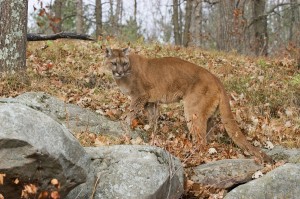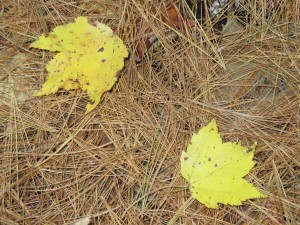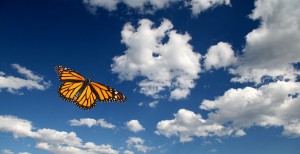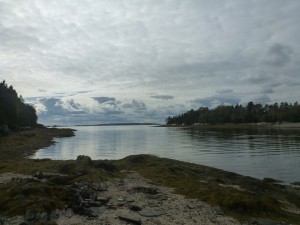I am some 60 minutes into my run in Estabrook Woods on this way-too-warm day, the last one of a winter that never happened, and as my fatigue deepens, I’ve turned my mind to the will needed to step smoothly, to ease along. I’m trying to cohere at a point when the whole running project wants to collapse, its wheels bouncing away, its resolve losing air. My eyes are set steadily on the trail six feet ahead, reading it for stones and good landings. Perhaps it is only that I am moving and caged by my own will, but I sense other motion along the left peripheral edge of vision; adrenaline juices my system, and before I can think, I’ve already upped my speed – I am getting ready for flight. All of this is over in under a second. As my next step falls, the gray shape on my left – crouching wolf? ready cougar? – resolves to rock; my chemistry settles. And I run on at my deliberate and deliberative pace through what must be one of safest stretches of woodland in the world.
Still, as I run I begin to recall other moments when unexpected shapes on the periphery of vision have brought on similar spikes of startle-juice, when I’ve been suddenly ready to go, or to have a go. And this gets me wondering about the gallery of threats hung deep in my biology, the pictures passed down along the long evolutionary chain of ancestors so that we might survive in our wanderings out from Africa, or out from town. There must be a series of shapes associated with threat that I take with me every time I run in the woods…or along the veldt.
A few years ago I recall reading an article that proposed a positive reinforcement that has kept whatever genetic structure is behind what we call attention deficit disorder, or ADD, alive in us. As a teacher, I’ve long wondered about the roots of this scattering of attention, often at its height just when we ask daily for focus…on this passage of reading, for instance…or on these reductive equations. You, we say to students, must master these words or figures; put everything else aside. And they try. They want, after all, to succeed; they really do.
But, the article’s theory said, perhaps evolution’s wiring has another idea, and it can be found in the word I’ve just used, “aside.” Once, deep in our prehistory, perhaps when we were all still gathered in Africa, it became clear that both our curious natures and the need to find the resources of open territory would lead us out from our original continent. But walking out of Africa would be no easy journey. It would be walking in a dangerous world, one where threat – that sabertooth tiger, for example – might be right along side the trail to be taken. Who then would lead us outward? The theory proposed that we would be/were led by scouts and shamans, who were often selected for their ability to see – it must have seemed a preternatural sort of vision – what most missed, especially along the margins of vision. Those who could see aside, who could spot the peripheral rustle in the brush or conjure some vision, would have been among our leaders. And they, as leaders, would have gotten the best food, the best mates; their genes would have been selected for the next generations and passed on.
What we bring with us when we go walking or running surely shapes what we see and feel when we’re trying to get “out there.”
Note: I am well aware of the torment that severe ADHD causes and by no means want to diminish its effects. It does, however, strike me that in its milder forms it may foster the sort of awareness that helps us see in deep woods.




